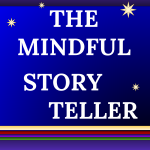
”Slovak folk art has always abounded in eastern Slovakia…The Eastern Slovakians are…known as great folksinger and story tellers.” – Stefan Blasko, ABC Slovak Language (Volume 5 – Slovakia: Geography and History), p. 193 (1973)
∞∞∞∞∞∞∞∞
They explained to me beforehand who I was going to see. When we arrived at the house, they went into the backyard to fetch him. He had been working in the garden (of course) and he was wearing an old hat. There were actually cobwebs on the hat. It was like a dream.
That day in 1987 with the old man and the cobwebby hat was a pivotal one in my life. I was in the small village of Lastomir in eastern Slovakia, the village where my grandmother had been born in 1892. The eighty-something-year-old man in the hat was my Great Uncle Jan, my grandma’s younger brother.
Grandma Kasony died in Texas in the late 1970s, about 10 years before I met her brother Jan in Slovakia. The last time my grandmother and her brother saw each other was when she was a teenager and he was a boy, just before she left for America. They would never see each other again. Their children would never meet each other. They would never know each other’s grandchildren – until, in 1987, I met my grandma’s brother – and he beheld his older sister’s youngest grandchild. He had not seen her or any of her descendents for over 75 years. My Great Uncle Jan and I held each other’s hands and gazed at each other with tear-swelled eyes.
There is much brokenness and fragmentation in our lives, in our stories, in our family histories. There are unknowns that will forever remain unknown, for some there are many. Lauret Savoy speaks of walking through “many untended unnamed graves” of African-American slaves. Here, family story is muted, made invisible, silenced by external forces, and Savoy feels “as if part of me lay beneath fieldstones, buried by a white-washed past.”
Whether our family stories are lost or stolen, there are longings for wholeness. Reaching out to touch bits of who we are and understand where we came from is the work of healing; it is the ongoing process work; it is the sacred labyrinth walk toward wholeness.
My ancestors came from Ireland and Slovakia. Like all places, these lands are rich in story. I love folk stories and tales from all over the world; at the same time, the embrace of identity – or, perhaps, the longing for that embrace – draws me to Irish and Slovak tales and lore. There is warmth and delight in the thought that when I learn and share an old Slovak folk tale, I may be retelling a tale that Great Uncle Jan and Grandma heard as children, or perhaps their parents heard it, or perhaps their grandparents told the same story.
∞∞∞∞∞∞∞∞
Are there particular lands or peoples that you feel connected to? Perhaps they are part of your family, ethnic, or racial heritage. Perhaps it is not a “blood connection,’ but you simply feel a great affinity or synergy with a specific place or people. Many dedicated folklorists and collectors devoted their lives to preserving and recording ancient tales. These collections are available. The collectors have done the difficult work of gathering these treasures – these gems and jewels – and they have gathered these treasures that they might be shared – that these stories might continue to entertain and inform and challenge and inspire. At this moment in history, you have an absurd and incredible opportunity. You can go to the folktale section of your library (or online) and soak in the treasure wealth of stories from the cultures and peoples with whom you are connected. You have this opportunity. You have this choice.
(Music: Courtesy of Adrian Von Ziegler, “Sacred Earth.” )